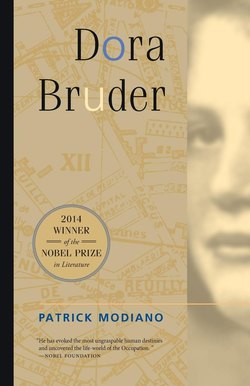Читать книгу Dora Bruder - Patrick Modiano - Страница 13
На сайте Литреса книга снята с продажи.
Оглавление.................
AND, AT THE PORTE DE CLIGNANCOURT, THE YEARS slipped by till the outbreak of war. I know nothing about the Bruders during this time. Was Cécile already working as a “furrier’s seamstress,” or rather, as it says in the files, “salaried garment worker”? Her niece thinks that she was employed in a workshop near the Rue de Ruisseau, but she can’t be sure. Was Ernest Bruder still working as an unskilled laborer, if not at the Westinghouse factory in Freinville, then elsewhere, in some other suburb? Or had he too found work in a garment workshop in Paris? Next to the words trade or profession on the file that they had drawn up on him during the Occupation, and on which I had read “French legionnaire, 2d class, 100% disabled,” it says “None.”
A few photographs from this period. The earliest, their wedding day. They are seated, their elbows resting on a sort of pedestal. She is enveloped in a long white veil that trails to the floor and seems to be knotted at her left ear. He wears tails with a white bow tie. A photograph with their daughter, Dora. They are seated, Dora standing between them: she can’t be more than two years old. A photograph of Dora, surely taken after a special school assembly. She is aged twelve or thereabouts and wears a white dress and ankle socks. She holds a book in her right hand. Her hair is crowned by a circlet of what appear to be white flowers. Her left hand rests on the edge of an enormous white cube patterned with rows of black geometric motifs, clearly a studio prop. Another photograph, taken in the same place at the same period, perhaps on the same day: the floor tiles are recognizable, as is the big white cube with black geometric motifs on which Cécile Bruder is perched. Dora stands on her left, in a high-necked dress, her left arm bent across her body so as to place her hand on her mother’s shoulder. In another photograph with her mother, Dora is about twelve years old, her hair shorter than in the previous picture. They are standing in front of what appears to be an old wall, though it must be one of the photographer’s screens. Both wear black dresses with a white collar. Dora stands slightly in front and to the right of her mother. An oval-shaped photograph in which Dora is slightly older—thirteen or fourteen, longer hair—and all three are in single file, their faces turned toward the camera: first Dora and her mother, both in white blouses, then Ernest Bruder, in jacket and tie. A photograph of Cécile Bruder in front of what appears to be a suburban house. The lefthand wall in the foreground is covered in a mass of ivy. She is sitting on the edge of three concrete steps. She wears a light summer dress. In the background, the silhouette of a child with her back to the camera, her arms and legs bare, wearing either a black cardigan or a bathing suit. Dora? And behind a wooden fence, the facade of another house, with a porch and a single upstairs window. Where could this be?
An earlier photograph of Dora alone, aged nine or ten. Caught in a ray of sunshine, entirely surrounded by shadow, she might be on a rooftop. Dressed in a white blouse and ankle socks, she stands, hand on hip, her right foot placed on the concrete rim of what appears to be a large cage or aviary, although, owing to the shadow, you can’t make out the animals or birds confined there. These shadows and patches of sunlight are those of a summer’s day.
Dora Bruder with her mother
Dora Bruder with her mother and grandmother
